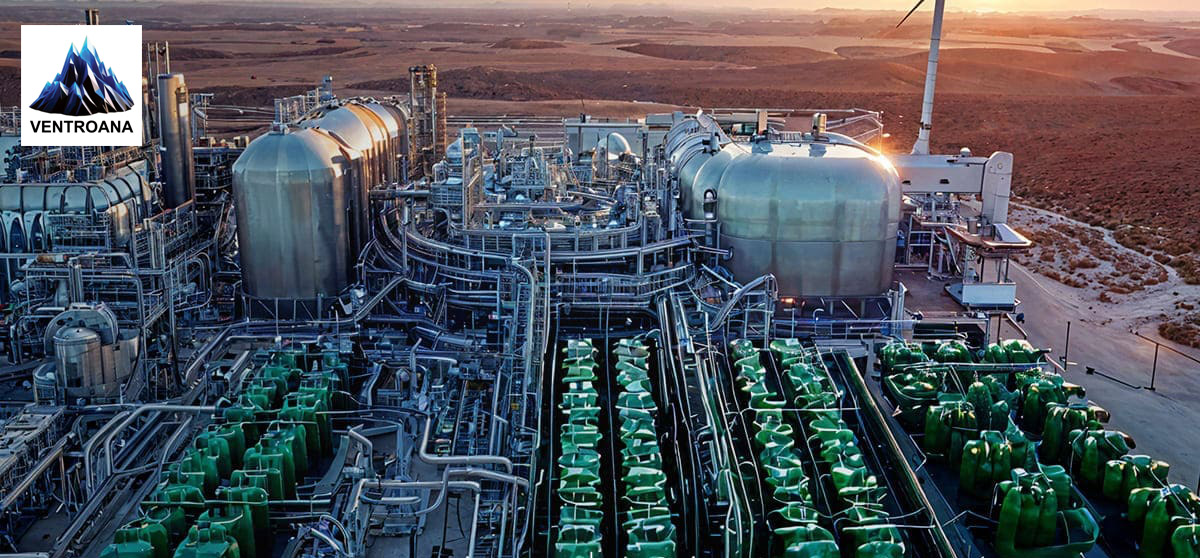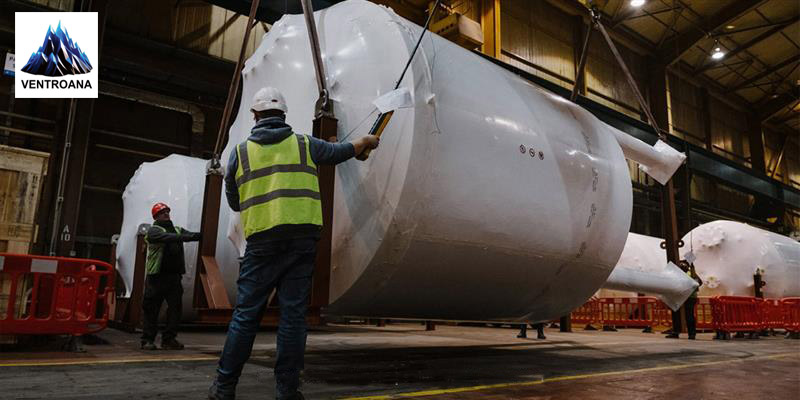Green Hydrogen
December 12, 2024

The global energy landscape is changing fast. This change is due to the need to reduce carbon emissions. The shift to clean energy drives this transformation. Green hydrogen is a key player in transforming the energy landscape. It helps industries decarbonize and leads in new technologies.
It integrates well with existing energy systems. It supports sustainable power generation as a production substance. It will play a key role in future energy innovations. This blog explores how it is produced and its use in power stations. We will discuss its technology, benefits over traditional fuels, and impact on the power sector.
It comes from using renewable electricity to split water molecules. The hydrogen-oxygen splitting process of water produces energy without carbon emissions. It serves as a clean energy source. It is also a renewable energy source.
Blue hydrogen depends on carbon capture to reduce emissions. Grey hydrogen emits large amounts of CO2 during production. It remains emissions-free when powered by renewable electricity. These sources include wind, solar, and hydropower.
The growing acceptance of its production technologies aligns with the global goal to leave fossil fuels behind. This progress supports the shift toward clean energy. The United States is investing heavily in renewable electricity infrastructure. European countries are also investing to promote its development.
Power plants are the main part of the world's energy networks as they are the centers of electricity generation and distribution. Conventional thermal power plants use coal, natural gas, or oil energy. They are the greatest polluters of greenhouse gases. They incorporate it, making it an advanced way to decarbonize electric power generation without losing reliability and efficiency.
It can replace gasoline in gas turbines. This allows the production of electricity without emissions. It is more acceptable to replace old thermal plants. Retrofitting these plants involves shifting to hydrogen-based power plants. These plants require only small modifications.
Hydrogen fuel cells are another way to access green hydrogen. The process converts hydrogen into electricity in these cells and releases only water vapor as a byproduct. This technology is especially suitable for distributed power systems and emergency power generation.
A major factor causing a problem with renewable electric energy is the issue of its intermittency. You can store hydrogen from renewable sources for a long time. This makes it a long-term technology.
It stores extra renewable energy captured during low electricity usage. This energy converts to hydrogen and then electricity during peak times. Stored hydrogen provides energy during weak electricity conditions.
Some of its key benefits are mentioned below.
It ensures zero direct and indirect carbon emissions. It involves no carbon conversion during thermal combustion. Fuel cell operations also produce no emissions. This helps to meet stricter environmental regulations.
It enhances energy system flexibility. It is useful in power generation and synthetic fuel production. This versatility proves the gas's role in integrated energy systems. Its flexibility supports gradual adoption in diverse applications.
It is no longer the near-green power plant being an analogy. In addition, heavy industry uses it to replace fossil fuels. Manufacturers use it in steel production, chemical production, and refining.
Alternative energy production from renewable sources will combat fossil fuel imports. It will also increase energy resilience. As a result, it will lead to economic resilience in the countries.
It has huge potential as a fuel for power plants. However, there are key problems to solve.
Hydrogen production costs for a green plant remain high. Electrolysis equipment is expensive. Renewable electricity is also costly.
A massive increase in production is necessary to drive costs down. Technological breakthroughs are essential. These are prerequisites for making costs competitive with gray hydrogen and fossil fuels.
Hydrogen, transportation, and distribution storage infrastructure are a prerequisite for integrating it into power plants and energy systems. These inclinations are in pipelines, storage tanks, and refueling stations.
Making green hydrogen, storing it, and using it as electricity is less efficient than using renewable energy. Utilities find direct renewable energy use more efficient. A solution lies in improving the efficiency of these processes. This is the focus of current research.
Successfully using green hydrogen will help achieve global decarbonization goals. Technological development and lower costs will make it more important in the clean energy system.
They can reach a total decarbonization condition by powering hydrogen from renewable electricity production. This integration makes the grid more stable and fully utilizes renewable energy resources.
Green hydrogen, combined with captured carbon from industry, generates synthetic fuels. This allows the industry to decarbonize. Sectors such as aviation and long transportation can also decarbonize using these fuels.
Further innovations in turbine technology enable higher hydrogen concentrations in fuel blends. Hydrogen-only thermal power plants are now becoming realizable.
It is a game-changer for the energy industry. It replaces fossil fuels with a clean and flexible solution. This solution can power any power source. Executing this power plant program will reduce global greenhouse gas emissions. It will help the transition to clean energy. Countries like the U.S. are investing in green electricity and hydrogen infrastructure. Power plants are innovative technologies.
Ventro Analytics supports the clean energy transition. It provides advanced solutions for hydrogen adoption in power plants. These solutions extend beyond power plants. By embracing green hydrogen, we can achieve a sustainable future where power generation is efficient and environmentally responsible.
It is more than just a clean fuel. It’s a pathway to a greener, more resilient energy future. Let’s harness its potential to power our world sustainably. Contact Ventro Analytics as your trusted partner. Together, we can forge a more sustainable future. To avail of our services, call us at
or email us at sales@ventroana.com.
1. Why is green hydrogen important for power plants?
Green hydrogen offers a sustainable alternative to fossil fuels, reducing greenhouse gas emissions, improving energy efficiency, and supporting the transition to clean energy.
2. What are the challenges of implementing green hydrogen in power plants?
Challenges include high production costs, infrastructure development, storage and transportation issues, and the need for technological advancements.
3. How can power plants integrate green hydrogen into their energy systems?
Power plants can integrate green hydrogen by using it as a turbine fuel, blending it with natural gas, or adopting fuel cells for energy generation.
4. What are the key benefits of green hydrogen in power generation?
Green hydrogen reduces emissions, supports renewable energy storage, enhances grid stability, and provides a reliable, sustainable energy source for future power needs.
5. What industries benefit the most from green hydrogen in power generation?
Heavy manufacturing, transportation, and utilities benefit from green hydrogen for its potential for large-scale, sustainable energy solutions.
Tags: Green hydrogen production Clean energies Synthetic fuels Renewable electricity Blue hydrogen Power generation Electric generation Energy systems Grey hydrogen Hydrogen produced

Successful Implementation of Green Hydrogen in Power Plants
Discover how green hydrogen revolutionizes power plants with sustainable energy solutions, reducing ...

Driving Innovation and Resilience: Insights from the 10th Annual Energy Supply C...
Gain insights on driving innovation and resilience at the 10th Energy Supply Chain & Procurement Sum...

Understanding EPC Engineering: Key Concepts Explained
Discover the essentials of EPC Engineering, covering contracts, project phases, and roles of EPC con...